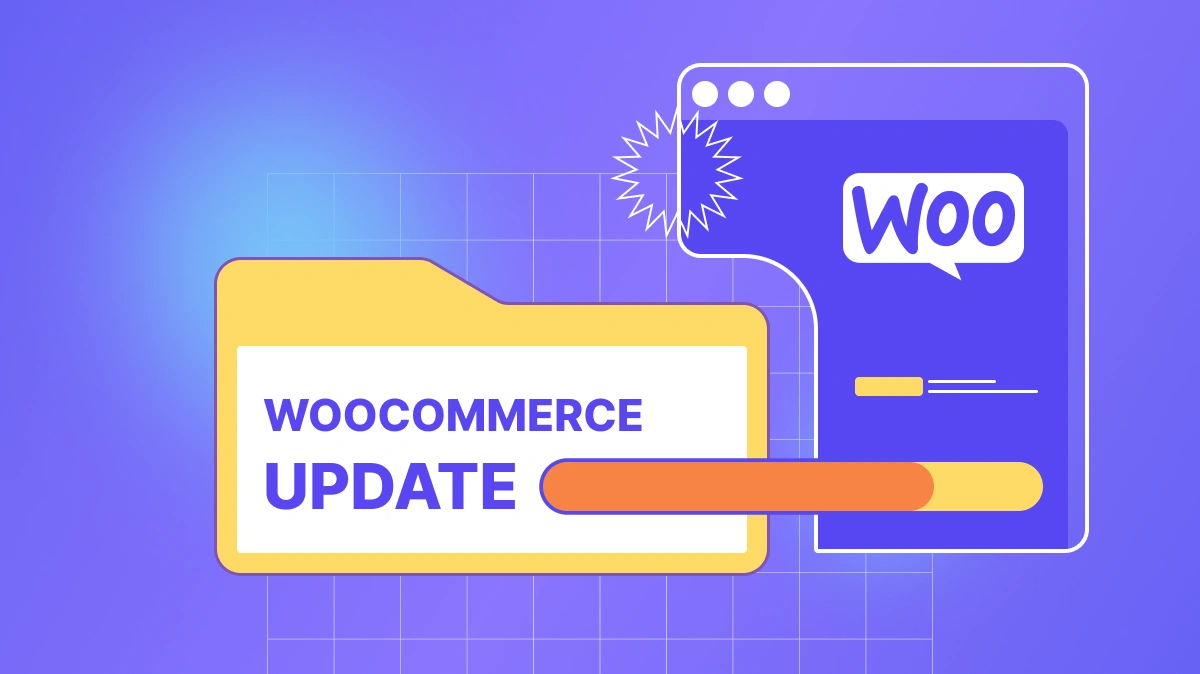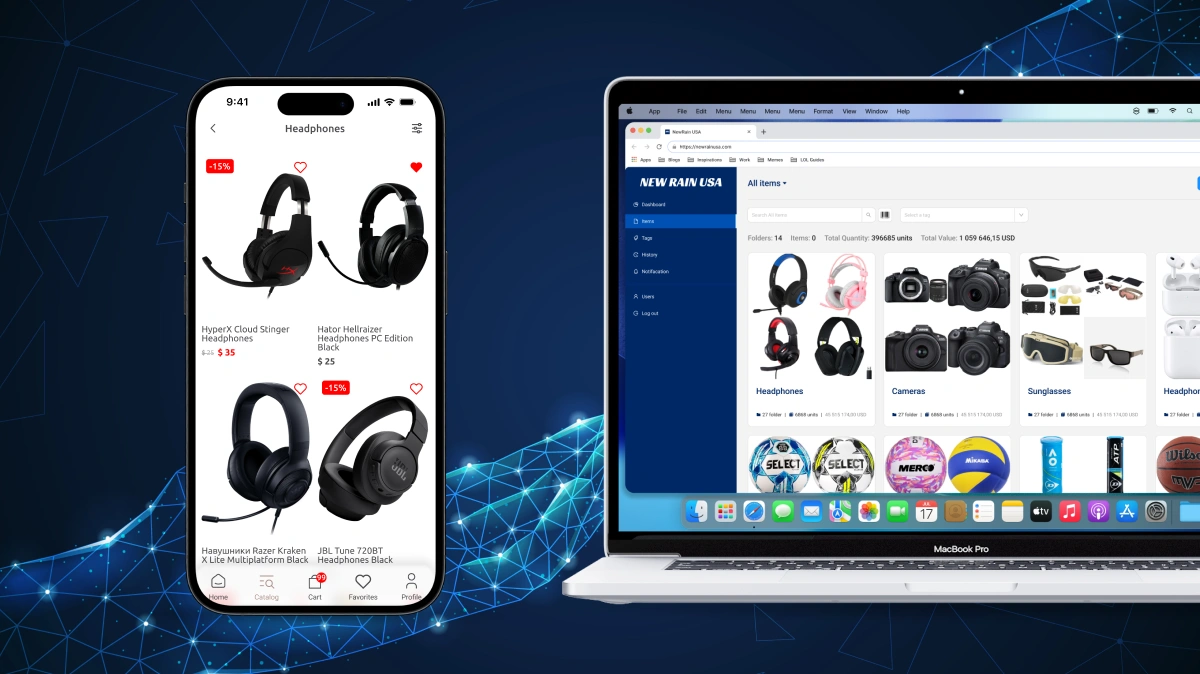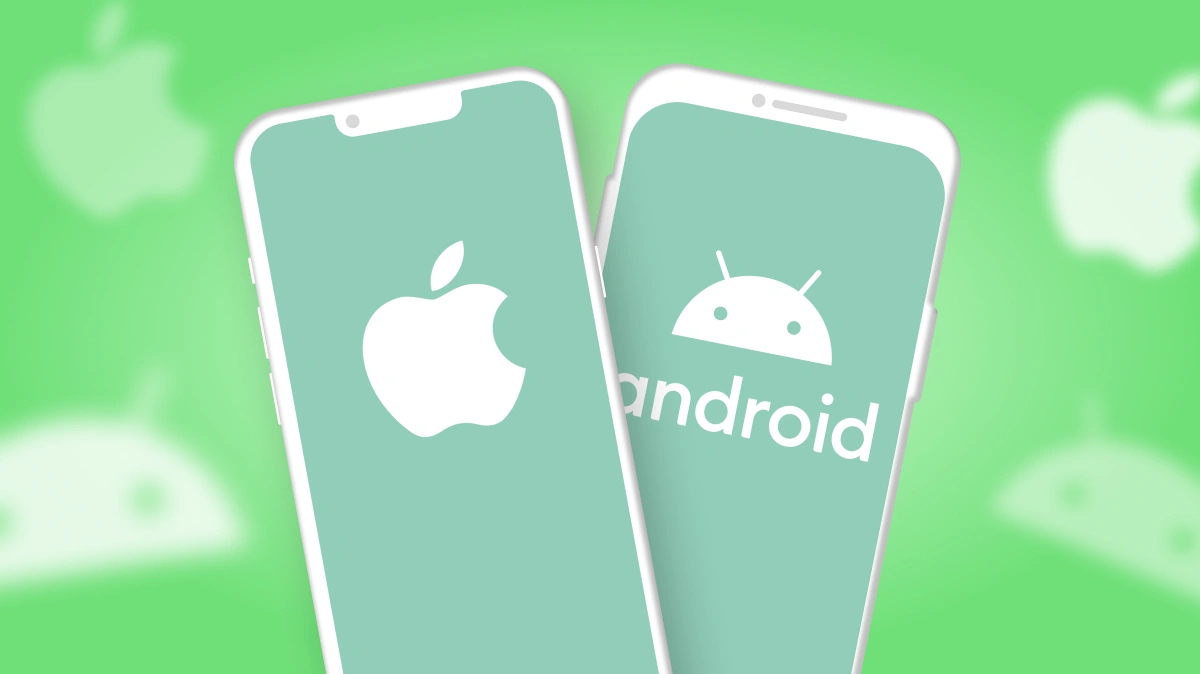
In 2025, a native app is a cornerstone for brands aiming to stand out among competitors, engage customers, and enhance loyalty. With mobile traffic surpassing 60% of total internet traffic, native mobile apps are essential for businesses, startups, and corporations. This article delves into why a native app is critical for your brand, how it drives differentiation, user experience, and organic traffic, and provides actionable tips for creation and optimization.
Why Native Apps Matter in 2025
Native apps, built specifically for iOS or Android, offer unmatched performance and device integration, delivering a unique user experience. Analysts predict the mobile app market will reach $700 billion in 2025, with over 350 billion downloads. Key benefits of native apps for brands include:
- High Performance: Faster loading and smoother operation than hybrid apps.
- Device Integration: Leveraging GPS, cameras, and sensors for personalized features.
- Customer Loyalty: Push notifications and offline access retain users.
- Competitive Edge: Associated with innovation and customer focus.
SEO Tip: Optimize descriptions in App Store and Google Play with keywords like "native app for branding", "mobile branding", or "personalized experience" to attract organic traffic.
1. Brand Differentiation Through Unique Experience
Native apps enable brands to craft a tailored UI/UX that reflects their style and values, setting them apart from competitors with generic solutions.
Benefits for Brands
- Personalization: Using AI for recommendations based on user behavior.
- Interactivity: Integrating AR/VR for try-ons or virtual tours.
- Emotional Connection: Exclusive content like brand stories or loyalty programs.
- Offline Access: Quick access to features without internet.
How to Implement?
- Develop with Swift for iOS and Kotlin for Android.
- Integrate Firebase for analytics and push notifications.
- Create loyalty programs with rewards for engagement.
2. Enhanced Performance and Reliability
Native apps provide superior speed and stability, reinforcing brand perception as a reliable partner.
Benefits
- Fast Loading: Fewer delays, higher conversion rates.
- OS Integration: Full access to hardware for advanced features.
- Security: Enhanced data protection via biometric authentication.
How to Implement?
- Test on real devices to optimize battery and memory usage.
- Use Crashlytics for stability monitoring.
- Add Face ID or Touch ID for security.
3. Customer Engagement and Retention
Native apps bring brands closer to customers with personalized features and seamless access.
Benefits
- Personalized Offers: Data-driven targeted promotions.
- Push Notifications: Reminders for promotions or abandoned carts.
- Loyalty Programs: Rewards for repeat customers.
How to Implement?
- Integrate CRM systems like HubSpot or Salesforce.
- Use OneSignal for push notifications.
- Incorporate gamification for higher engagement.
4. SEO Optimization and Marketing
Native apps unlock new opportunities for ASO (App Store Optimization) and marketing to drive organic traffic.
Benefits
- ASO: Optimized descriptions boost store rankings.
- Content Marketing: In-app blogs to attract audiences.
- Social Media: Integration with Instagram or TikTok.
How to Implement?
- Use Google Keyword Planner for keyword selection.
- Optimize icons and screenshots for stores.
- Leverage Google My Business for local search.
5. Trends in Native Apps for 2025
To stay competitive, brands must align with trends in native app development.
- Artificial Intelligence: AI-driven personalized recommendations.
- Augmented Reality: AR for product try-ons or previews.
- Voice Interfaces: Voice-activated ordering.
- Security: Biometric authentication for data protection.
Tips for Building a Native App
- Define Goals: Identify key features for your brand.
- Build an MVP: Develop a basic version with core functions.
- Test UX: Ensure usability across devices.
- Optimize ASO: Use keywords like "native app".
Native apps in 2025 are a powerful tool for branding, customer engagement, and loyalty. With high performance, personalization, and integration with technologies like AI and AR, your brand can shine in a competitive market. Invest in a native app to secure a competitive edge and thrive in the digital world.

In 2025, WooCommerce optimization for local SEO has become a key tool for online stores aiming to attract local customers and increase sales. The growth of local search, where 46% of queries are "near me", makes local SEO essential for restaurants, stores, and delivery services. Optimizing WooCommerce for local queries not only boosts visibility in Google but also converts traffic into real orders. This article explores how WooCommerce optimization attracts local customers, drives business growth, and how to optimize your site for maximum organic traffic.
Why Local SEO Is Important for WooCommerce in 2025?
Local SEO helps WooCommerce stores be visible to nearby customers, which is critical for businesses with physical locations. According to Google, 76% of local search queries lead to a store visit within a day. WooCommerce optimization provides:
- Local customer attraction: Higher rankings in local search.
- Sales increase: Converting traffic into orders.
- Competitive advantage: Standing out from aggregators like Glovo or Uber Eats.
- Cost savings: Organic traffic is cheaper than ads.
SEO Tip: Use keywords like "local SEO WooCommerce", "WooCommerce optimization", or "attract local customers" in meta tags and content to attract organic traffic.
1. Optimizing Google My Business
Google My Business (GMB) is the foundation of local SEO for WooCommerce stores, allowing appearance in local search results.
Benefits
- Visibility: Profile appears in Google's "local pack".
- Trust: Reviews and photos increase loyalty.
- Traffic: Customers find you with "near me" queries.
How to Implement?
- Create a GMB profile with address, hours, and contacts.
- Add photos of products and services.
- Encourage reviews via email or push notifications.
2. Local Keywords and Content
Using local keywords in WooCommerce content attracts customers from your region.
Benefits
- Relevance: Queries like "pizza delivery New York" boost traffic.
- Conversion: Local customers order faster.
- Competition: Lower competition in local search.
How to Implement?
- Use Google Keyword Planner to select words.
- Create pages for cities, like "Delivery in Boston".
- Add a blog with local tips for content marketing.
3. Mobile Optimization and Speed
Mobile optimization for WooCommerce stores is critical, as 80% of local queries are from mobile devices.
Benefits
- Speed: Sites loading <3 seconds reduce bounce rates.
- UX: Responsive design boosts conversions.
- SEO: Google prioritizes mobile sites.
How to Implement?
- Use Google PageSpeed Insights to test speed.
- Optimize images in WebP and use CDN.
- Check responsiveness on different devices.
4. Integration with Social Media and Reviews
Social media integration and review management increase trust from local customers.
Benefits
- Social proof: Reviews on Google influence decisions.
- Viral effect: Sharing on Instagram and Facebook.
- SEO: Reviews improve rankings in local search.
How to Implement?
- Integrate sharing buttons for Instagram and Facebook.
- Encourage reviews via Google My Business.
- Use Trustpilot for feedback collection.
5. Local Links and Partnerships
Local link building through partnerships enhances site authority in Google.
Benefits
- Authority: Links from local sites improve SEO.
- Traffic: Partnerships with local businesses attract customers.
- Ranking: Higher positions in local search.
How to Implement?
- Partner with local businesses for link exchanges.
- Add your site to local directories like Yelp or 2GIS.
- Create content for local blogs.
Trends for Local SEO in WooCommerce in 2025
- Artificial Intelligence: AI for personalized search.
- Voice Search: 50% of queries via voice.
- Mobile First: Google indexes mobile versions.
- Local Content: Blogs for local audiences.
Tips for Effective WooCommerce Optimization
- Optimize GMB: Add photos, reviews, and contacts.
- Use Local Keywords: Like "pizza delivery London".
- Speed Up the Site: Optimize for mobile devices.
- Collect Reviews: Encourage customers to leave feedback.
- Build Links: Partner with local sites.
WooCommerce optimization for local SEO in 2025 attracts local customers, boosts sales, and strengthens brand. Use local SEO to stand out from competitors and turn traffic into orders. Invest in SEO to ensure your online store succeeds.

In 2025, launching a Shopify store is a fast and efficient way to start an online business, helping startups, small businesses, and entrepreneurs attract customers and boost sales. The e-commerce market is projected to reach $7 trillion, making Shopify an ideal platform for rapid launches. The process of launching a Shopify store can take anywhere from a few hours to weeks, depending on complexity. This article explores how long it takes to launch a Shopify store, key steps, ways to speed up the process, and how to optimize for organic traffic through SEO.
Why Shopify Is Ideal for Launching a Store in 2025?
Shopify streamlines the creation of an online store with ready-to-use tools for businesses. The e-commerce market in 2025 is expected to hit $7 trillion, with Shopify powering over 2 million stores. The platform offers:
- Quick launch: User-friendly interface for beginners.
- Scalability: Suitable for small and large businesses.
- Integrations: Connects to payment systems, marketing, and analytics.
- SEO tools: Optimization for organic traffic.
SEO Tip: Use keywords like "launch Shopify store", "online store on Shopify", or "how to create Shopify store" in meta tags, headers, and content to attract organic traffic.
1. Stages of Launching a Shopify Store
The process of launching a Shopify store involves several stages that can be completed quickly with proper planning.
Benefits
- Registration: 5–10 minutes to create an account.
- Setup: 1–2 hours for basic settings.
- Adding products: 2–4 hours for a small catalog.
How to Implement?
- Sign up on Shopify and select a plan (from $29/month).
- Configure currency, shipping, and payments via Stripe or PayPal.
- Add products with high-quality photos and SEO-optimized descriptions.
2. Design and Branding Setup
Shopify enables fast design customization to create a professional-looking store.
Benefits
- Themes: Free and paid templates for quick starts.
- Branding: Add logos, colors, and fonts.
- Mobile adaptation: Automatic optimization for smartphones.
How to Implement?
- Choose a theme from the Shopify Theme Store.
- Customize UI/UX via the Shopify editor.
- Test responsiveness with Google Mobile-Friendly Test.
3. Payment and Shipping Integration
Setting up payment systems and shipping on Shopify accelerates the launch process.
Benefits
- Payments: Supports Stripe, PayPal, Apple Pay.
- Shipping: Integration with UPS, FedEx, or local services.
- Automation: Fast transactions without coding.
How to Implement?
- Enable Shopify Payments for payment processing.
- Set up shipping via Shopify apps.
- Test transactions for security.
4. SEO Optimization for Traffic Attraction
SEO optimization on Shopify drives organic traffic, speeding up return on investment.
Benefits
- Keywords: Selection for local and global search.
- Content: Blog to engage audiences.
- Speed: Optimized site for Google.
How to Implement?
- Use Google Keyword Planner to select keywords.
- Add SEO-optimized descriptions for products and categories.
- Integrate Google Analytics for traffic analysis.
5. Marketing and Analytics After Launch
Shopify provides marketing and analytics tools to attract customers and track progress.
Benefits
- Email marketing: Campaigns for customer retention.
- Analytics: Sales tracking via Shopify Analytics.
- Advertising: Integration with Google Ads and Facebook Ads.
How to Implement?
- Integrate Klaviyo for email campaigns.
- Use Google Analytics and Shopify Analytics for insights.
- Set up ads for quick traffic attraction.
Trends for Shopify Stores in 2025
- Artificial Intelligence: AI for personalized recommendations.
- Augmented Reality: AR for virtual product try-ons.
- Voice Search: 50% of queries via voice assistants.
- Sustainability: Focus on eco-friendly brands and packaging.
Tips for a Quick Shopify Store Launch
- Define your niche: Choose unique products for your business.
- Set up basics: Register, select a plan, and set up a domain.
- Add products: Include high-quality photos and descriptions.
- Integrate payments: Connect Stripe or PayPal.
- Optimize SEO: Use keywords for Google.
Launching a Shopify store in 2025 takes from hours to weeks, depending on complexity. Leverage Shopify for a fast start, SEO for attracting organic traffic, and analytics for growth. Invest in a Shopify store to ensure your business success in the digital world.

In 2025, app-CRM integration is a key tool for businesses aiming to enhance customer loyalty and boost sales. The growing volume of customer data and demand for personalized user experiences make CRM integration essential for restaurants, stores, services, and small businesses. This article explores how app-CRM integration benefits businesses, drives growth, and how to optimize it for organic traffic.
Why CRM Integration Matters in 2025?
App-CRM integration transforms customer management by enabling real-time data synchronization. Analysts predict the mobile app market will reach $600 billion, with CRM integration increasing conversions by 30%. CRM integration offers businesses:
- Personalization: AI for tailored offers.
- Automation: Syncing orders and customer data.
- Sales growth: Targeted campaigns based on data.
- Competitive advantage: Quick response to customer needs.
SEO Tip: Use keywords like "app-CRM integration", "CRM for business", or "personalized experience" in App Store and Google Play descriptions to attract organic traffic.
1. Improved Customer Management
App-CRM integration centralizes customer data, simplifying management.
Benefits
- Data synchronization: Automatic updates from the app to CRM.
- Analytics: Tracking behavior for better service.
- Efficiency: Faster response to customer queries.
How to Implement?
- Integrate HubSpot or Salesforce with the app via API.
- Set up automatic order data transfer.
- Use Google Analytics for customer behavior analysis.
2. Enhanced Personalization
CRM integration enables personalized offers, boosting customer loyalty.
Benefits
- Recommendations: AI for tailored offers based on history.
- Push notifications: Personalized promotions via the app.
- Sales growth: Targeted campaigns increase conversions.
How to Implement?
- Integrate Firebase for personalized push notifications.
- Use TensorFlow for AI recommendations.
- Sync data with CRM for targeting.
3. Real-Time Data Synchronization
App-CRM integration ensures real-time data sync, improving business efficiency.
Benefits
- Automation: App data automatically transfers to CRM.
- Analytics: Comprehensive customer data analysis.
- Time savings: Less manual work for teams.
How to Implement?
- Use Zapier for automated integration.
- Set up API between the app and CRM.
- Test synchronization with Google Analytics.
4. Sales Growth Through Targeting
CRM integration boosts sales through targeted campaigns and automation.
Benefits
- Targeting: Campaigns based on app data.
- Automated emails: Reminders for abandoned carts.
- Conversion: Sales increase by 20–30%.
How to Implement?
- Integrate Klaviyo for email marketing.
- Use Mixpanel for sales analysis.
- Set up automated campaigns in CRM.
5. SEO and Organic Traffic
CRM integration enables data-driven SEO optimization, attracting organic traffic.
Benefits
- Personalized content: Optimization based on customer data.
- ASO: Higher rankings in App Store and Google Play.
- Traffic: Increased organic visits.
How to Implement?
- Use Google Keyword Planner for keywords.
- ASO: Optimize descriptions with CRM data.
- Add Google My Business for local search.
CRM Integration Trends in 2025
- Artificial Intelligence: AI for automated data analysis.
- Voice Interfaces: 40% of users rely on voice commands.
- 5G: Faster data synchronization.
- Security: Biometric authentication for protection.
Tips for CRM Integration
- Choose a CRM: Select HubSpot or Salesforce for your business.
- Set up API: Ensure data synchronization.
- Test: Check integration for speed.
- SEO Focus: Use data for optimization.
- Analyze: Use Google Analytics for evaluation.
App-CRM integration in 2025 is a strategic solution for businesses, boosting sales, loyalty, and efficiency. With data sync and personalization, your business can stand out from competitors. Invest in CRM integration to ensure success in the digital world.

In 2025, a mobile app is a cornerstone for businesses aiming to attract customers and boost sales. With mobile traffic surpassing 70%, mobile apps are vital for restaurants, stores, and services. Yet, not every business requires an app. This article explores 5 key signs it’s time to order mobile app development, how it drives business growth, and how to optimize for organic traffic through SEO and ASO.
Why a Mobile App Matters in 2025?
Mobile apps transform businesses by providing quick access to services and personalized experiences. The mobile app market is projected to reach $600 billion in 2025, with mobile traffic accounting for 70% of total traffic. Mobile apps for businesses offer:
- Customer engagement: Personalized push notifications for activation.
- Sales growth: Simplified online ordering.
- Customer loyalty: Loyalty programs powered by AI.
- Competitive advantage: Innovations with AR and 5G.
SEO Tip: Use keywords like "mobile app development", "app for business", or "mobile app" in App Store and Google Play descriptions to attract organic traffic.
1. Surge in Mobile Traffic
If your business’s mobile traffic exceeds 50–70%, customers expect seamless access via smartphones. Without a mobile app, you risk losing this audience.
Benefits
- Quick access: Customers can order in a few taps.
- Personalization: AI delivers tailored recommendations.
- Engagement: Push notifications boost user activity.
How to Implement?
- Integrate Firebase for sending push notifications.
- Use Google Analytics to analyze mobile traffic.
- Order app development focused on mobile UX.
2. Growth in Online Sales
Online ordering accounts for up to 60% of sales in restaurants and stores. A mobile app streamlines this process, increasing conversions.
Benefits
- Convenient payments: Integration with Stripe, Apple Pay, or Google Pay.
- Personalized offers: AI to boost sales.
- Analytics: Track sales with Mixpanel or Amplitude.
How to Implement?
- Add a cart and payment module to the app.
- Integrate AI for personalized recommendations.
- Order development focused on online sales.
3. Low Customer Loyalty
If customers rarely return, a mobile app can enhance customer loyalty through personalization and rewards.
Benefits
- Loyalty programs: Discounts, bonuses, or gifts.
- Push notifications: Reminders for promotions and deals.
- Personalization: AI for tailored offers.
How to Implement?
- Integrate HubSpot or Salesforce for CRM.
- Add loyalty programs with rewards.
- Order development focused on personalization.
4. Need for Data Collection
A mobile app enables collecting customer behavior data, optimizing business processes.
Benefits
- Behavioral analysis: Track interactions with app features.
- Marketing: Targeted offers based on data.
- Improvement: Update the app based on analytics.
How to Implement?
- Integrate Google Analytics or Firebase for data collection.
- Use AI for behavioral analysis.
- Order development with analytics tools.
5. Competitors Are Using Apps
If competitors have mobile apps, your business may lose customers due to a lack of modern engagement channels.
Benefits
- Innovation: AR and 5G for a unique experience.
- Brand: A personalized app strengthens reputation.
- Organic traffic: Optimization for SEO and ASO.
How to Implement?
- Integrate ARCore or ARKit for innovative features.
- Optimize the app with keywords for App Store.
- Order development from professional developers.
Mobile App Trends in 2025
- Artificial Intelligence: AI for personalization and recommendations.
- Augmented Reality: AR for interactive experiences.
- Voice Interfaces: 38% of users rely on voice commands.
- Security: Biometric authentication for data protection.
Tips for Businesses
- Analyze traffic: If mobile traffic > 50%, order an app.
- Evaluate sales: If online sales > 40%, an app will boost conversions.
- Check loyalty: If customers don’t return, loyalty programs can help.
- Collect data: Use an app for customer behavior analysis.
- Competition: If competitors have apps, your business is falling behind.
Mobile apps in 2025 are a strategic tool for customer engagement, sales growth, and brand enhancement. If your business exhibits these 5 signs, it’s time to order mobile app development. Leverage modern technologies like AI, AR, and 5G to create a unique user experience and improve rankings in App Store and Google Play.

In 2025, mobile apps are integral to the strategy of restaurants, stores, services, and startups aiming to attract customers and increase sales. However, launching a mobile app is just the beginning. Post-release support is critical to ensure stability, relevance, and a seamless user experience. Without proper support, an app can quickly lose users due to bugs or outdated functionality. This article explores why post-release app support is essential for your business, how it drives customer loyalty, revenue growth, and attracts organic traffic.
Why Post-Release App Support Matters
Post-release support ensures the stability and relevance of a mobile app, directly impacting its success. Analysts predict the mobile app market will reach $600 billion in 2025, yet 70% of users delete apps due to technical issues or lack of updates. App support delivers:
- User retention: Fixing bugs enhances customer loyalty.
- Improved rankings: Regular updates boost positions in App Store and Google Play.
- Increased revenue: An up-to-date app drives sales.
- Organic traffic: ASO optimization improves visibility.
SEO Tip: Use keywords like "mobile app support", "app updates", or "user experience" in App Store and Google Play descriptions to attract organic traffic.
1. Ensuring Stability and Bug Fixing
Technical stability is the foundation of a successful mobile app. Regular monitoring and prompt bug fixes ensure a seamless user experience.
Benefits
- Bug minimization: Quick issue detection via analytics.
- Customer trust: Stability fosters loyalty.
- Automation: Tools streamline monitoring.
How to Implement?
- Integrate Sentry or Crashlytics for error tracking.
- Use Google Analytics for user behavior analysis.
- Set up automated alerts for critical crashes.
2. Regular Updates for Relevance
App updates keep a mobile app relevant by adding new features and improving user experience.
Benefits
- New features: Increase user engagement.
- ASO: Updates improve store rankings.
- Personalization: Leverage AI for recommendations.
How to Implement?
- Plan updates every 2–3 months.
- Use Firebase Remote Config for content updates.
- Integrate TensorFlow for AI recommendations.
3. Optimization for App Store and Google Play
ASO (App Store Optimization) is vital for attracting organic traffic and enhancing mobile app visibility.
Benefits
- Higher visibility: Better rankings in App Store and Google Play.
- Engagement: Optimized descriptions drive downloads.
- Localization: Support for multiple languages.
How to Implement?
- Use Google Keyword Planner for keyword research.
- Update screenshots, descriptions, and videos in App Store and Google Play.
- Add localization for global markets.
4. Collecting and Analyzing Customer Feedback
Customer feedback is a valuable resource for improving a mobile app and boosting its rankings.
Benefits
- Improved UX: Identify issues through feedback.
- Trust: Positive reviews attract new users.
- ASO: Reviews impact store rankings.
How to Implement?
- Integrate Trustpilot or Yotpo for feedback collection.
- Set up push notifications via Firebase for feedback prompts.
- Use Sentiment Analysis to analyze user sentiments.
5. Security and Data Protection
Post-release support includes ensuring the security of a mobile app, which builds customer trust.
Benefits
- Data encryption: Protects transactions and personal data.
- Biometric authentication: Secure access via Face ID or fingerprint.
- Compliance: Adheres to GDPR and CCPA standards.
How to Implement?
- Regularly update SSL and HTTPS certificates.
- Integrate OAuth for secure authentication.
- Use Sentry for security monitoring.
Trends for Mobile App Support in 2025
- Artificial Intelligence: AI for automated issue analysis and recommendations.
- Augmented Reality: AR for new interactive features.
- Voice Interfaces: 40% of users leverage voice commands.
- 5G: Faster access to updates and content.
Tips for Effective App Support
- Plan support: Create a schedule for updates and monitoring.
- Use automation: Tools like Sentry save time.
- Optimize ASO: Regularly update keywords.
- Collect feedback: Integrate Yotpo or Trustpilot.
- Ensure security: Continuously update certificates.
Post-release app support in 2025 is the key to business success. It ensures stability, customer loyalty, and revenue growth. Invest in mobile app support using modern tools like AI, AR, and 5G to stay competitive and attract organic traffic.

In 2025, native apps are the gold standard for businesses aiming to deliver a superior user experience, engage customers, and boost conversions. Unlike web apps or hybrid solutions, native apps offer speed, platform-specific optimization, and access to device hardware. With mobile traffic accounting for over 65% of total internet traffic, native apps are a critical tool for restaurants, stores, services, and startups. This article explores why native apps outperform other solutions, how they drive business growth, and how to optimize them for organic traffic.
Why Native Apps Matter in 2025
Native apps, built specifically for iOS or Android, deliver a faster and more intuitive user experience. Analysts predict the mobile app market will reach $600 billion in 2025, with native apps accounting for 80% of downloads in App Store and Google Play. They offer:
- High performance: Fast loading and smooth operation.
- Platform integration: Seamless use of iOS or Android features.
- Offline access: Functionality without internet.
- Personalization: AI-driven recommendations.
SEO Tip: Optimize descriptions in App Store and Google Play with keywords like "native app", "mobile app for business", or "user experience" to attract organic traffic.
1. Superior Performance and Speed
Native apps outperform web apps and hybrid solutions due to their compilation into platform-specific machine code.
Benefits
- Fast loading: Response time under 1 second.
- Smooth animations: Intuitive UI/UX boosts conversions.
- Offline mode: Access content without internet.
How to Implement?
- Use Swift for iOS or Kotlin for Android.
- Optimize images in WebP format for speed.
- Integrate CDN for content caching.
2. Hardware Integration
Native apps leverage smartphone hardware like cameras, GPS, or biometric authentication, enhancing user experience.
Benefits
- AR features: View dishes or products in augmented reality.
- Geolocation: Delivery based on GPS data.
- Biometrics: Secure login via Face ID or fingerprint.
How to Implement?
- Integrate ARKit (iOS) or ARCore (Android) for AR.
- Use Google Maps API for geolocation.
- Add support for Touch ID or Face ID.
3. Personalized User Experience
Native apps enable a tailored UI/UX, optimized for each platform, increasing customer loyalty.
Benefits
- AI recommendations: Suggestions based on preferences.
- Loyalty programs: Discounts for repeat customers.
- Push notifications: Personalized promotions.
How to Implement?
- Integrate Firebase for push notifications.
- Use TensorFlow for AI recommendations.
- Add CRM systems like HubSpot for customer management.
4. SEO and Marketing Flexibility
Native apps unlock opportunities for SEO optimization and marketing, driving organic traffic.
Benefits
- ASO: Optimization for App Store and Google Play.
- Content marketing: Blogs to engage audiences.
- Social media: Integration with Instagram and TikTok.
How to Implement?
- Use Google Keyword Planner for ASO.
- Add Google Analytics for behavior tracking.
- Integrate Google My Business for local search.
5. Security and Customer Trust
Native apps offer enhanced security, fostering customer trust.
Benefits
- Data encryption: Protects transactions and personal data.
- Biometric authentication: Secure access.
- Compliance: Adheres to GDPR and CCPA standards.
How to Implement?
- Integrate SSL and HTTPS for security.
- Add OAuth support for authentication.
- Use Sentry for error monitoring.
Trends for Native Apps in 2025
- Artificial intelligence: AI for personalization.
- Augmented reality: AR for interactive experiences.
- Voice interfaces: 40% of users use voice commands.
- 5G: Faster content delivery.
Tips for Building a Native App
- Define goals: Identify your business needs.
- Build an MVP: Launch a basic app version.
- Test UX: Ensure usability on iOS and Android.
- Invest in ASO: Optimize for App Store.
- Analyze data: Use Mixpanel.
Native apps in 2025 deliver a superior user experience, enhance customer loyalty, and drive business growth. Invest in a native app to stand out and attract organic traffic.

In 2025, WooCommerce remains a top platform for creating online stores, especially for selling digital products like e-books, music, courses, or software. With its flexibility, integrations, and powerful SEO tools, WooCommerce is perfect for startups, freelancers, and small businesses aiming to scale sales. This article explores how to set up WooCommerce for selling digital products, boost conversions, attract organic traffic, and build a successful online store.
Why WooCommerce for Digital Products in 2025?
WooCommerce is a WordPress plugin that enables creating online stores with minimal costs. In 2025, the digital products market is growing to $300 billion, and WooCommerce powers millions of businesses due to:
- Flexibility: Customizable for any digital product.
- SEO tools: Optimization for Google and social media.
- Low cost: Free base plugin.
- Integrations: Connects with payment and marketing tools.
SEO Tip: Use keywords like "WooCommerce for digital products", "online store", or "sell courses" in meta tags and descriptions to attract organic traffic.
1. Installing and Setting Up WooCommerce
The first step to building an online store is installing WooCommerce on your WordPress site.
Benefits
- Easy installation: Available in the WordPress plugin directory.
- Setup wizard: Configures in minutes.
- Digital product support: Easy file uploads for downloads.
How to Implement?
- Install WooCommerce via the WordPress admin panel.
- Run the setup wizard for basic settings (currency, country).
- Enable the “Digital Products” option in product settings.
2. Setting Up Digital Products
Adding digital products in WooCommerce simplifies selling e-books, music, or courses.
Benefits
- Automatic delivery: Files available post-payment.
- Download limits: Control file access.
- Flexibility: Sell one-time or subscription products.
How to Implement?
- Add a product in WooCommerce and select “Digital” type.
- Upload files (PDF, MP3) and set download limits.
- Use a plugin like WooCommerce Subscriptions for subscriptions.
3. Integrating Payment Systems
WooCommerce supports multiple payment systems, simplifying transactions for digital products.
Benefits
- Global payments: Supports Stripe, PayPal, Apple Pay.
- Security: Transaction protection via SSL.
- Flexibility: Customizable currencies and payment methods.
How to Implement?
- Install Stripe or PayPal plugins for WooCommerce.
- Activate an SSL certificate on your site.
- Set currency in WooCommerce > Settings > General.
4. SEO Optimization for Digital Products
SEO optimization in WooCommerce helps attract organic traffic and increase store visibility.
Benefits
- Meta tags: Customizable titles and descriptions.
- Content marketing: Blog to engage customers.
- Social media: Integration with Instagram and TikTok.
How to Implement?
- Install the Yoast SEO plugin for page optimization.
- Add keywords like "buy e-book" to product descriptions.
- Integrate Google My Business for local search.
5. Marketing and Analytics
WooCommerce enables startups to use marketing tools to promote digital products.
Benefits
- Email marketing: Campaigns to re-engage customers.
- Sales analytics: Tracking via Google Analytics.
- Abandoned carts: Automated reminders.
How to Implement?
- Install Mailchimp for WooCommerce for email campaigns.
- Integrate Google Analytics via MonsterInsights.
- Set up abandoned carts with a plugin like CartFlows.
Trends for Digital Products in 2025
- Artificial intelligence: AI for personalized recommendations.
- Subscriptions: Growing popularity of subscription models.
- Mobile optimization: 70% of purchases via smartphones.
- Security: Protecting files from piracy.
Tips for Selling Digital Products on WooCommerce
- Define products: Create e-books, courses, or music.
- Optimize UX: Use mobile-friendly themes.
- Invest in SEO: Add keywords like "WooCommerce digital products".
- Test marketing: Use Google Ads and Instagram Ads.
- Analyze data: Track via Google Analytics.
WooCommerce in 2025 is an ideal solution for selling digital products, offering flexibility, SEO tools, and marketing capabilities. Set up your online store to attract customers and succeed in the digital economy.

In 2025, Shopify remains the leading platform for e-commerce startups aiming to launch an online store, attract customers, and boost sales. With its ease of use, flexibility, and robust SEO tools, Shopify is the ideal choice for small businesses, startups, and entrepreneurs looking to compete in the global market. This article explores why Shopify is perfect for e-commerce startups, how it drives sales growth, enhances brand reputation, and attracts customers, and how to optimize your store for maximum organic traffic.
Why Shopify Is the Best Choice in 2025?
Shopify transforms how startups build and grow online stores. Analysts predict the e-commerce market will reach $7 trillion in 2025, with Shopify powering over 2 million businesses worldwide. The platform offers:
- Easy setup: Intuitive interface for quick store creation.
- Scalability: Suitable for startups and large brands.
- SEO tools: Optimization for Google and social media.
- Flexibility: Integration with payment systems and apps.
SEO Tip: Use keywords like "Shopify for startups", "online store", or "e-commerce platform" in meta tags and descriptions to attract organic traffic.
1. Ease of Store Creation and Management
Shopify enables startups to launch an online store without technical expertise, making it ideal for new entrepreneurs.
Benefits
- Intuitive interface: Set up a store in hours.
- Ready-made themes: Modern designs for UX and UI.
- Mobile optimization: Adapts to all devices.
How to Implement?
- Choose a theme from Shopify Theme Store.
- Set up SEO-optimized pages via the admin panel.
- Test your store with Google Mobile-Friendly Test.
2. Powerful Tools for Sales Growth
Shopify provides tools to drive sales growth, helping startups increase conversions and retain customers.
Benefits
- Payment systems: Integration with Stripe, PayPal, Apple Pay.
- Abandoned carts: Automated reminders to recover customers.
- Loyalty programs: Discounts and bonuses for customers.
How to Implement?
- Enable Shopify Payments for fast transactions.
- Use apps like Klaviyo for email marketing.
- Set up sales analytics with Shopify Analytics.
3. SEO and Marketing Capabilities
Shopify offers robust SEO tools that help startups attract organic traffic and compete with larger players.
Benefits
- SEO optimization: Customizable meta tags and URLs.
- Content marketing: Blog to engage audiences.
- Social media: Integration with Instagram and TikTok.
How to Implement?
- Use Google Keyword Planner to select keywords.
- Add SEO-optimized product descriptions, like "Shopify online store".
- Integrate Google My Business for local search.
4. Integration and Scalability
Shopify enables startups to integrate tools and scale their business without significant costs.
Benefits
- App Store: Thousands of apps for marketing and analytics.
- Integration: Connect with CRM like HubSpot.
- Scalability: Supports growth from startup to brand.
How to Implement?
- Install apps like Oberlo for dropshipping.
- Integrate Google Analytics for traffic tracking.
- Upgrade your Shopify plan for scaling.
5. Support and Security
Shopify provides reliable support and security, critical for startups in e-commerce.
Benefits
- 24/7 support: Assistance via chat and email.
- Security: SSL certificates and data protection.
- Updates: Automatic platform updates.
How to Implement?
- Enable SSL for secure transactions.
- Contact Shopify Support for issue resolution.
- Use Shopify Experts for customization.
E-commerce Trends in 2025
- Artificial intelligence: AI for personalized offers.
- Augmented reality: AR for product try-ons.
- Voice shopping: 35% of users use voice commands.
- Sustainability: Focus on eco-friendly brands.
Tips for Startups on Shopify
- Define your niche: Focus on unique products.
- Optimize UX: Use mobile-friendly themes.
- Invest in SEO: Add keywords like "Shopify store".
- Test marketing: Use Google Ads and Instagram Ads.
- Analyze data: Track via Shopify Analytics.
Shopify in 2025 is the ideal choice for e-commerce startups, offering simplicity, SEO tools, integrations, and security. With Shopify, your business can grow rapidly, attract customers, and compete globally.
Thank you for contacting Webstick!
-
Ukraine

- м. Kryvyi Rih
- +380979405664
-
Australia

- 51 - 57 Norton St, Leichhardt
- +61434206011
-
Israel

- Arlozorov St 55, Safed
- +972528689801
